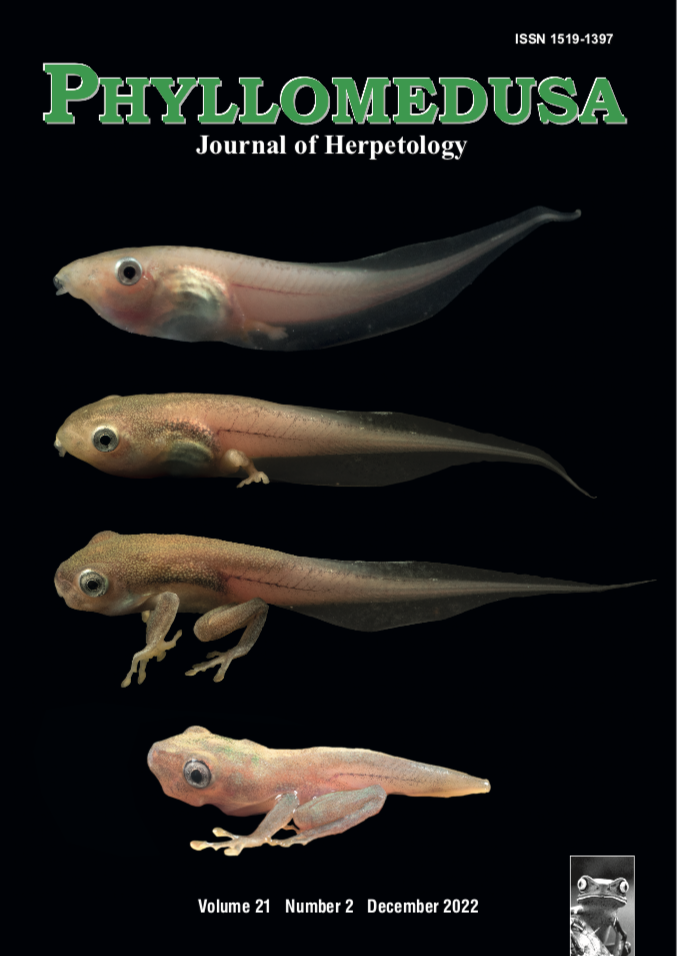A growth model for Paleosuchus trigonatus (Crocodylia: Alligatoridae) from the Rio Negro predicts growth of individuals from the Xingu River, Brazil
DOI:
https://doi.org/10.11606/issn.2316-9079.v21i2p117-123Keywords:
Brazilian Amazonia, Growth, Hydroelectric dam, Schneider’s dwarf caimanAbstract
Patterns of growth of crocodilians vary geographically within the same species, so models developed in one area may not predict size-age relationships in others. We used recapture data for three females and six males of Paleosuchus trigonatus from the Belo Monte hydroelectric dam area on the Xingu River to validate a growth model developed on a tributary of the Rio Negro. Individuals were recaptured between two and 10 years after marking (2012–2022). The data indicate that the monomolecular (von Bertalanffy by length) model is adequate to model growth of intermediate size animals. Recapture of one female after eight years indicates that the Rio Negro model can be used to model growth with accuracy for individuals from the Xingu River.
Downloads
Downloads
Published
Issue
Section
License
Copyright (c) 2022 ESALQ-USP

This work is licensed under a Creative Commons Attribution-NonCommercial-NoDerivatives 4.0 International License.
All material originally published in Phyllomedusa belongs to Escola Superior de Agricultura Luiz de Queiroz - Universidade de São Paulo. All contents are under a license of Creative Commons BY-NC-ND.


 Impact Factor (JCR): 0.400
Impact Factor (JCR): 0.400 CiteScore: 1.0
CiteScore: 1.0